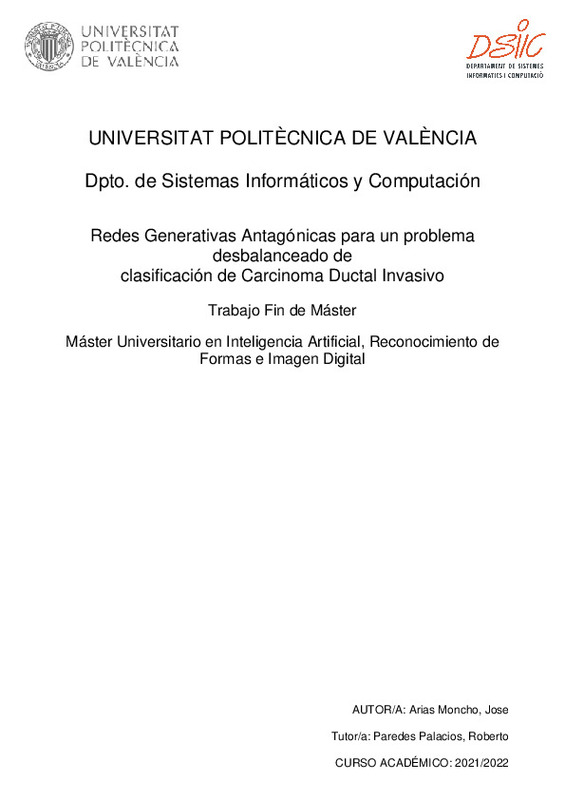JavaScript is disabled for your browser. Some features of this site may not work without it.
Buscar en RiuNet
Listar
Mi cuenta
Estadísticas
Ayuda RiuNet
Admin. UPV
Redes Generativas Antagónicas para un problema desbalanceado de clasificación de Carcinoma Ductal Invasivo
Mostrar el registro completo del ítem
Arias Moncho, J. (2022). Redes Generativas Antagónicas para un problema desbalanceado de clasificación de Carcinoma Ductal Invasivo. Universitat Politècnica de València. http://hdl.handle.net/10251/187330
Por favor, use este identificador para citar o enlazar este ítem: http://hdl.handle.net/10251/187330
Ficheros en el ítem
Metadatos del ítem
| Título: | Redes Generativas Antagónicas para un problema desbalanceado de clasificación de Carcinoma Ductal Invasivo | |||
| Otro titulo: |
|
|||
| Autor: | Arias Moncho, Jose | |||
| Director(es): | ||||
| Entidad UPV: |
|
|||
| Fecha acto/lectura: |
|
|||
| Resumen: |
[ES] La clasificación de imágenes en ámbitos médicos es un área bastante
prometedora, debido a lo interesante que sería utilizar estos sistemas
para ayudar a profesionales, aliviando su trabajo a partir de la ...[+]
[EN] Image classification in medical fields is a very promising area, due to how interesting it would be to use these systems to help professionals, relieving their work by automating some tasks. However, one of the drawbacks ...[+]
|
|||
| Palabras clave: |
|
|||
| Derechos de uso: | Reconocimiento - No comercial (by-nc) | |||
| Editorial: |
|
|||
| Titulación: |
|
|||
| Tipo: |
|







